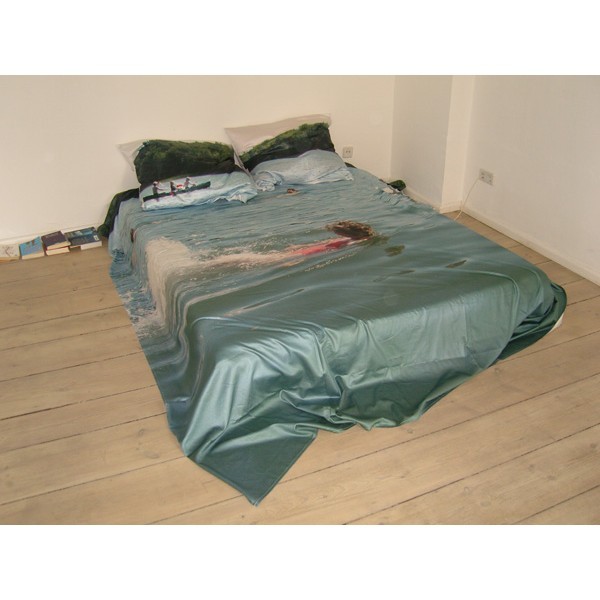"I study Fashion academically"
45 posts
• Page 1 of 2 • 1, 2
"I study Fashion academically"
Here at care-tags we embrace learning at every level. This thread is an environment for discussing capital eff Fashion in what, elsewhere, would be considered a very pretentious manner. Hopefully we shall be able to keep up with Messrs odradek and smiles, and with any luck the very erudite Rosenrot will school us good and proper like
Our reading list, courtesy of the V&A:
http://www.vam.ac.uk/content/articles/g ... l-fashion/
http://www.vam.ac.uk/content/articles/f ... ding-list/
(if you explore the related content on the right-hand side you will be taken into a labyrinth of reading lists which seem to get ever-more specific i shall be reading for some time it appears)
feel free to post any relevant articles or things you want to discuss in here (e.g. "the ethics of buying expensive clothing that romanticises being poor" or "on the use of cheap synthetics in the work of rei kawakubo and junya watanabe" etc)
*zero replies*
Our reading list, courtesy of the V&A:
http://www.vam.ac.uk/content/articles/g ... l-fashion/
http://www.vam.ac.uk/content/articles/f ... ding-list/
(if you explore the related content on the right-hand side you will be taken into a labyrinth of reading lists which seem to get ever-more specific i shall be reading for some time it appears)
feel free to post any relevant articles or things you want to discuss in here (e.g. "the ethics of buying expensive clothing that romanticises being poor" or "on the use of cheap synthetics in the work of rei kawakubo and junya watanabe" etc)
*zero replies*
- 7
-

germinal - Garminlad
- Posts: 1282
- Joined: Thu Jul 11, 2013 12:18 pm
- Reputation: 5243
Re: "I study Fashion academically"
I find that if something is cheap and a synthetic blend I think "eh highstreet garbage" but if it's expensive I think "wow must be an amazing blend I wonder what it's like etc etc"
- 3

-

bels - Yung Winona
- Posts: 5087
- Joined: Thu Jul 11, 2013 2:43 pm
- Reputation: 18872
Re: "I study Fashion academically"
That reading list is very exciting, thanks germ! Going to grab some for the kindle
Wish I could go to antwerp and study fashion but still get paid my current salary :(
Wish I could go to antwerp and study fashion but still get paid my current salary :(
- 0
-

Syeknom - Posts: 2109
- Joined: Thu Jul 11, 2013 4:48 pm
- Location: Amsterdam
- Reputation: 7986
Re: "I study Fashion academically"
http://en.wikipedia.org/wiki/Trompe-l'%C5%93il
trompe-lo'eil and its use in fashion - for what purpose is it used? does margiela use it to distort the act of viewing clothes? (the same way his flat garments and so forth distort the act of wearing clothes?) ramdom, how does WvB use tromp-el'oeil? and why? who else uses it? is trom-pe'loeil always used in a playful, tongue-in-cheek, joke between contemporaries sort of way? or can it be a more nasty sort of deception?
trompel o-e'il and its use outside of fashion? ramdom mentioned banksy, about whom i know very little. is trompeloei-'l more effective in 2-D (a wall; a canvas) or in 3-D (clothing)? any examples of it being used in sculpture, for example? (help me out here smiles.) is James Turrell's work an example of tr-ompeloei'l? (creating substance where there is nothing.)
fashion is a visual art form, but it is also a sensual one - can clothes deceive us in other ways? (a material that looks soft, but is rigid; a fabric that appears shiny, but is rough to the touch; a fabric that smells like leather but looks and feels like wool; and so forth...)





- 4
-

germinal - Garminlad
- Posts: 1282
- Joined: Thu Jul 11, 2013 12:18 pm
- Reputation: 5243
Re: "I study Fashion academically"
was writing something up on trompe l'oeil in fashion actually
whatever guess i'll just dump the half written thing here https://docs.google.com/document/d/1BFy ... MEhUg/edit
whatever guess i'll just dump the half written thing here https://docs.google.com/document/d/1BFy ... MEhUg/edit
- 3
-

ramdomthought - Posts: 1102
- Joined: Wed Jul 10, 2013 11:53 pm
- Reputation: 5432
Re: "I study Fashion academically"
I don't really understand how trompe l'oeil is being used in those Walter van Beirendonck pictures. Could someone please explain this. Also is my understanding of trompe l'oeil correct, basically that it's a sort of forced perspective that is used in art to make things appear as they are not? And it is used in various ways in fashion to change the way we see clothes. Does trompe l'oeil go past forced perspective? Is there more to it than creating an illusion? Or is that what it is
- 0
-

Stingray Sam - Posts: 464
- Joined: Thu Sep 12, 2013 6:03 pm
- Location: Ceres Crossroads
- Reputation: 1290
Re: "I study Fashion academically"
the way i understand trompe l'oeil can refer to any optical illusion; i could well be wrong
the wvb stuff is interesting because whilst it does force perspective somewhat, i find that the strange angle and the naive style serves to flatten it again
this might help you see the "room"

the wvb stuff is interesting because whilst it does force perspective somewhat, i find that the strange angle and the naive style serves to flatten it again
this might help you see the "room"

- 0
-

germinal - Garminlad
- Posts: 1282
- Joined: Thu Jul 11, 2013 12:18 pm
- Reputation: 5243
Re: "I study Fashion academically"
i've always used stage-plays as my jumping off point for trompe l'oeil. there's a certain spot where set design stops being an abstraction of a thing like with mime but isn't quite a full blown recreation of the desired thing. it's one thing to say "oh, this cardboard cutout of a door isn't as good as a real door" and kill the illusion and it's another thing to say "this cardboard door is a door" and play into the illusion. with trompe l'oiel, i feel like it's a third thing: "this cardboard door is a cardboard door; it references the real door but it isn't one and it is its own thing and it is very good at being a cardboard door." all of a sudden you have something that gets to act both as it's signified and as itself and that opens up a whole bunch of possibilities to play with.
moving it to clothes and using the WvB example, it goes beyond just the dual purpose of "oh, this is a suit, this is a picture of a room, this a suit with a picture of a room on it." the best example is probably the flowers going past the lapel, where there's acknowledgement of the extension of the flat into the real world, ie, beyond the canvas which re-defines the nature of the suit (context-less, one would say "that lapel has funny shit hanging off of it") and the nature of the pattern on the suit ("it's reforming the suit pattern to the superficial on it.") is the model a guy wearing a room suit, or is he an extension of a room, or a representation of a room? why not all of them?
moving it to clothes and using the WvB example, it goes beyond just the dual purpose of "oh, this is a suit, this is a picture of a room, this a suit with a picture of a room on it." the best example is probably the flowers going past the lapel, where there's acknowledgement of the extension of the flat into the real world, ie, beyond the canvas which re-defines the nature of the suit (context-less, one would say "that lapel has funny shit hanging off of it") and the nature of the pattern on the suit ("it's reforming the suit pattern to the superficial on it.") is the model a guy wearing a room suit, or is he an extension of a room, or a representation of a room? why not all of them?
- 5

-

odradek - Posts: 993
- Joined: Fri Aug 02, 2013 4:53 pm
- Reputation: 6056
Re: "I study Fashion academically"
Oh thanks, I wasn't recognizing what the patterns were and how they interacted with the other patterns
- 0
-

Stingray Sam - Posts: 464
- Joined: Thu Sep 12, 2013 6:03 pm
- Location: Ceres Crossroads
- Reputation: 1290
Re: "I study Fashion academically"
Could one consider silhouette trompe l'oeil? Because it obscures the body and makes it appear different from reality? Or is that a misunderstanding of trompe l'oeil?
- 0
-

Stingray Sam - Posts: 464
- Joined: Thu Sep 12, 2013 6:03 pm
- Location: Ceres Crossroads
- Reputation: 1290
Re: "I study Fashion academically"
i like how the flowers simultaneously refer to the flowers in the vase and the boutonniere in the lapel
- 1
-

germinal - Garminlad
- Posts: 1282
- Joined: Thu Jul 11, 2013 12:18 pm
- Reputation: 5243
Re: "I study Fashion academically"
it may be helpful to learn about trompe l'oeil first as an artistic method and then as a fashion term. artistically it's mostly a way of creating the illusion of perspective, so like that hallway in charlie and the chocolate factory, and fashion usually plays with that and adds another layer of acknowledging the illusion of perspective. i'd say silhouette play is a different way of affecting how a person views the clothes.
- 0

-

odradek - Posts: 993
- Joined: Fri Aug 02, 2013 4:53 pm
- Reputation: 6056
Re: "I study Fashion academically"
Silhoutte isn't a form of trompe l'oeil (usually). The way I think about it there's nothing blending two different "worlds" together. In the jackets, the "world" of the room is interacting with our world. In silhoutte, you're usually missing that layer of the other world.
Trompe l'oeil isn't always about perspective and those kind of tricks. The classic example is this old as fuck painting of a Carthusian. The piece that's being presented as false is the fly in the picture meant to mimic a real fly (and it has arguably minimal or no use as part of the subject the artist was painting) so that the viewer would see it as a fly and not as a painting of a fly.
this old as fuck painting of a Carthusian. The piece that's being presented as false is the fly in the picture meant to mimic a real fly (and it has arguably minimal or no use as part of the subject the artist was painting) so that the viewer would see it as a fly and not as a painting of a fly.
You see this as well with painted frames that are on canvas rather than a real frame. You see it with margiela's bras that are really just a nude colored shirt with a painted piece that looks like a bra.
Trompe l'oeil isn't always about perspective and those kind of tricks. The classic example is
 this old as fuck painting of a Carthusian. The piece that's being presented as false is the fly in the picture meant to mimic a real fly (and it has arguably minimal or no use as part of the subject the artist was painting) so that the viewer would see it as a fly and not as a painting of a fly.
this old as fuck painting of a Carthusian. The piece that's being presented as false is the fly in the picture meant to mimic a real fly (and it has arguably minimal or no use as part of the subject the artist was painting) so that the viewer would see it as a fly and not as a painting of a fly.You see this as well with painted frames that are on canvas rather than a real frame. You see it with margiela's bras that are really just a nude colored shirt with a painted piece that looks like a bra.
- 0
-

ramdomthought - Posts: 1102
- Joined: Wed Jul 10, 2013 11:53 pm
- Reputation: 5432
Re: "I study Fashion academically"
Can we talk about deconstruction. i always here this term thrown around, but i am not entirely sure what it means. I'd really like to know the philosophy behind it, how it relates/is used in fashion, and where can i see it in not only fashion but other arts as well.
- 0
-

Stingray Sam - Posts: 464
- Joined: Thu Sep 12, 2013 6:03 pm
- Location: Ceres Crossroads
- Reputation: 1290
Re: "I study Fashion academically"
Forgive me if some of this is off, Derrida is...not easy and I'm not getting paid.
Deconstruction is one of the many offshoots of the incredibly dense and oblique continental line of philosophy that followed one Ferdinand Saussure's text "Course on General Linguistics" and the field of semiotics that it established. The basic idea is that there's a sign, like the word "CAR" and then the signified, the actual car, and there's a relationship between the two. After a lot of hubbub, Jacques Derrida wrote Of Grammatology, a prolix and unpleasant book whose main thrust is that this sign-signifier relationship, which has by this point become a much larger beast and includes more or less any (hegelian-reminiscent, which caused Derrida to make precise distinctions between his ideas and Hegel's) dichotomy, is necessarily violent and hierarchical and things can/should be done about that. Derrida was mostly referring to the idea that written language was not entirely in service to oral language and thereby could, in fact, create things to itself (thus, Grammatology, the study of textual meaning) but the method of doing so was talking about how the relationships between x and y are struggles between the two terms, that there are values placed on one or the other or both. Writing is subservient to speech, for instance.
Derrida comes to the conclusion that the violence of this kind of thing is probably Not Cool because of how it informs thought and contends that deconstruction of these relationships will allow a person to analyze them from all angles and in so doing, subvert and corrupt them. Now we are cooking mit gas, ja? One thing that's important to note is that this cannot be done willy-nilly: our understanding of the world exists through these relationships and, violent or not, we need them to communicate with one another. However, we can communicate through them with deconstructionist knowledge of other ways of appreciating these relationships.
As attached to fashion, according to internet research, it was first applied to the scene as a comparison with deconstructivist architecture. You might recognize Frank Gehry or Daniel Libeskind, or at least some of their buildings, and how they create discontinuities in the environment and their own structure, or what wikipedia calls "controlled chaos." After fashion was stuck with the appellation, there seems to be, in my unscholarly view, a bit of a backwards jump to reconnect to Derrida's version of deconstruction as a form of analysis rather than as a subsidiary of the deconstructivist ideas. This is also a bit more literally shown in some designers work, with clothes actually in states of deconstruction rather than strictly as a philosophical movement. There's a nice ~synergy~ there.
Anyway, as far as fashion is concerned, there are a few good articles online of people who know more than I do, but as is always true of the stuff, images will always be better. Designers like Rei Kawakubo and Margiela are more or less vanguard party, but stuff like Jean Paul Gaultier, some Alexander McQueen, my homeboy Jun Takahashi and others (feel free to add) also play with the stuff. You'll find it often manifests in things like frayed hems, reconstituted items, flattening of intrinsic meaning, inside-out pieces, broken pieces, unfinished pieces, pieces literally deconstructed into constituent parts, more or less the context in which you would expect things to exist being subverted.
The internet also informs me that there's a little bit of La Destroy to be pieced in here, a French movement of making ripped as fuck clothes that I'm sure sknss can comment more on.
Deconstruction is one of the many offshoots of the incredibly dense and oblique continental line of philosophy that followed one Ferdinand Saussure's text "Course on General Linguistics" and the field of semiotics that it established. The basic idea is that there's a sign, like the word "CAR" and then the signified, the actual car, and there's a relationship between the two. After a lot of hubbub, Jacques Derrida wrote Of Grammatology, a prolix and unpleasant book whose main thrust is that this sign-signifier relationship, which has by this point become a much larger beast and includes more or less any (hegelian-reminiscent, which caused Derrida to make precise distinctions between his ideas and Hegel's) dichotomy, is necessarily violent and hierarchical and things can/should be done about that. Derrida was mostly referring to the idea that written language was not entirely in service to oral language and thereby could, in fact, create things to itself (thus, Grammatology, the study of textual meaning) but the method of doing so was talking about how the relationships between x and y are struggles between the two terms, that there are values placed on one or the other or both. Writing is subservient to speech, for instance.
Derrida comes to the conclusion that the violence of this kind of thing is probably Not Cool because of how it informs thought and contends that deconstruction of these relationships will allow a person to analyze them from all angles and in so doing, subvert and corrupt them. Now we are cooking mit gas, ja? One thing that's important to note is that this cannot be done willy-nilly: our understanding of the world exists through these relationships and, violent or not, we need them to communicate with one another. However, we can communicate through them with deconstructionist knowledge of other ways of appreciating these relationships.
As attached to fashion, according to internet research, it was first applied to the scene as a comparison with deconstructivist architecture. You might recognize Frank Gehry or Daniel Libeskind, or at least some of their buildings, and how they create discontinuities in the environment and their own structure, or what wikipedia calls "controlled chaos." After fashion was stuck with the appellation, there seems to be, in my unscholarly view, a bit of a backwards jump to reconnect to Derrida's version of deconstruction as a form of analysis rather than as a subsidiary of the deconstructivist ideas. This is also a bit more literally shown in some designers work, with clothes actually in states of deconstruction rather than strictly as a philosophical movement. There's a nice ~synergy~ there.
Anyway, as far as fashion is concerned, there are a few good articles online of people who know more than I do, but as is always true of the stuff, images will always be better. Designers like Rei Kawakubo and Margiela are more or less vanguard party, but stuff like Jean Paul Gaultier, some Alexander McQueen, my homeboy Jun Takahashi and others (feel free to add) also play with the stuff. You'll find it often manifests in things like frayed hems, reconstituted items, flattening of intrinsic meaning, inside-out pieces, broken pieces, unfinished pieces, pieces literally deconstructed into constituent parts, more or less the context in which you would expect things to exist being subverted.
The internet also informs me that there's a little bit of La Destroy to be pieced in here, a French movement of making ripped as fuck clothes that I'm sure sknss can comment more on.
- 9

-

odradek - Posts: 993
- Joined: Fri Aug 02, 2013 4:53 pm
- Reputation: 6056
Re: "I study Fashion academically"
[b]odradek[/b/], do you study philosophy academically? And if not, how do you learn it? Through courses, books of the original work, books of analysis of the original work, internet articles on the books analyzing the original work, etc.?
- 3
-

UnwashedMolasses - Posts: 551
- Joined: Fri Sep 27, 2013 9:42 pm
- Reputation: 2222
Re: "I study Fashion academically"
just wanted to give a tip to the kiddos still in university: check if your school does Interlibrary Loan (ILL). It's a really amazing way to get your hands on designer archive publications, biographies, photography books, whatever youre into. Doesnt cost a dime. If your school has an art library/department check what they have too. Youd be
- 3
-

sid3000 - Posts: 137
- Joined: Tue Oct 08, 2013 1:09 am
- Reputation: 532
Re: "I study Fashion academically"
- 9
Last edited by Iliam on Mon Jul 21, 2014 10:56 pm, edited 1 time in total.
-

Iliam - Posts: 284
- Joined: Sat Jul 19, 2014 12:25 am
- Reputation: 1948
Re: "I study Fashion academically"
Thank you for posting, some excellent points you've raised.
My first thought after reading the article is, what about the men? Are they slaves too? Why is she only looking at the female models?
I will get back on this once I have time for proper thinking
My first thought after reading the article is, what about the men? Are they slaves too? Why is she only looking at the female models?
I will get back on this once I have time for proper thinking
- 2
-

Rosenrot - Posts: 146
- Joined: Thu Jul 25, 2013 9:14 pm
- Reputation: 2073
Re: "I study Fashion academically"
Are there more male womenswear designers than female? (I feel there are but I'm extremely ignant)
- 2

-

bels - Yung Winona
- Posts: 5087
- Joined: Thu Jul 11, 2013 2:43 pm
- Reputation: 18872
45 posts
• Page 1 of 2 • 1, 2
Who is online
Users browsing this forum: No registered users and 14 guests

